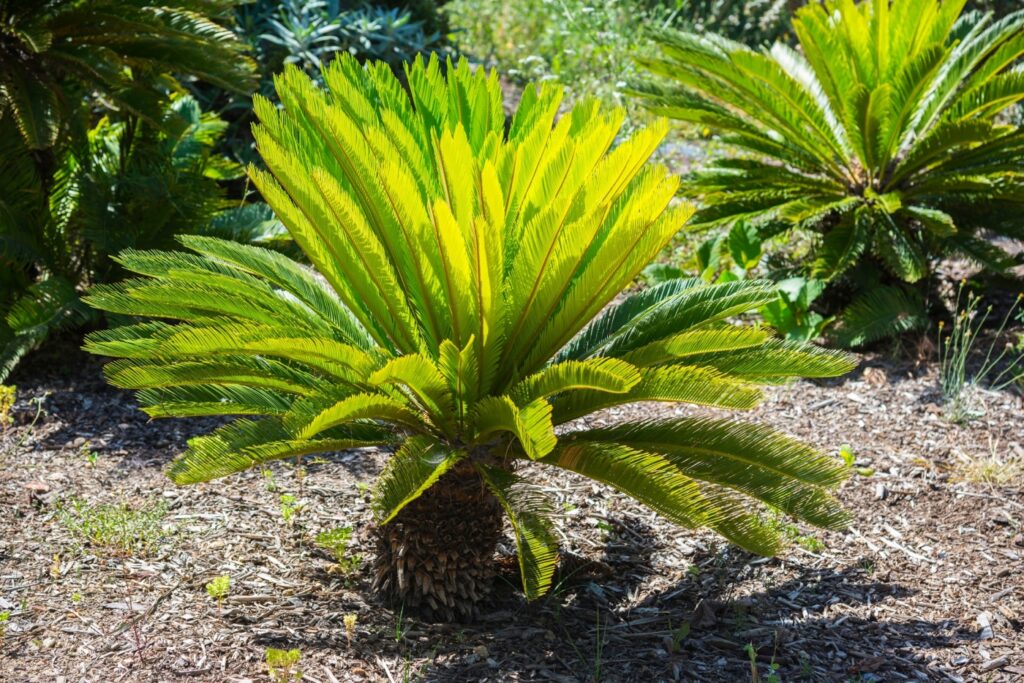
Q: We have two 30-year-old sago palms that we transplanted to our yard last October. The fronds they had then died so we trimmed those off. This sago threw a beautiful male bloom and is now fading. We finally see some growth at the bottom of the sago but so far, no new growth at the top. Should we pop the pups off so the energy will force its way to the main part of the plant? Or should we leave the pups? Is the main sago part done for? What do you say? It’s getting watered every other day. Help!
There may be several things going on here.
Transplanting, especially a 30-year-old plant, can be rough on any plant. No matter how carefully you do it, you’re going to damage the roots and make the plant unhappy. This is probably why the old fronds all died. If the main plant is not producing any new fronds, it may still be mad at you for moving it (or it might be fixing to die).
Luckily, you’ve got babies! I would carefully cut the pups away from the main plant (make sure you don’t cut away their roots) and pot them up.
Sago palms, although relatively easy to grow, can be touchy about overwatering and drainage. If the plant’s new location is not as well drained as its previous location, you will want to cut back on watering. Don’t let the soil get soggy since that can quickly lead to root rot and kill your plant. They are also heavy feeders, so fertilize regularly.
Important note: Sago palms should never be planted where children or especially pets can get to the leaves. Every part of this plant is poisonous!
Q: I have a mature avocado tree that flowers and appears healthy but stopped bearing fruit during the time our house was being rented. Is there a way to jumpstart its potential? Other trees in a 2-block radius, planted about same time, are still producing abundantly.
Are you sure it stopped producing while the house was a rental? Your tenants may have harvested all the fruit and neglected to tell you (diabolical, I know). If not that, it may just need some fertilizer and TLC. It also may have been getting less water if your tenants weren’t watering enough or decided that they didn’t want to pay a big water bill. This is the most likely issue.
Many fruit trees tend to fall into alternate-year bearing. One year it produces lots of fruit, then the following year not so much. This is perfectly normal. Everybody needs a break occasionally, fruit trees included.
If there are numerous avocado trees in your neighborhood, I don’t think pollination is an issue. Make sure that you’re giving it fertilizer and water on a regular basis and plant some flowers to bring in more pollinating insects. Although you may have to wait another year, you should be making guacamole in no time!
Looking for more gardening tips? Here’s how to contact the Master Gardener program in your area.
Los Angeles County
mglosangeleshelpline@ucdavis.edu; 626-586-1988; http://celosangeles.ucanr.edu/UC_Master_Gardener_Program/
Orange County
ucceocmghotline@ucanr.edu; 949-809-9760; http://mgorange.ucanr.edu/
Riverside County
anrmgriverside@ucanr.edu; 951-683-6491 ext. 231; https://ucanr.edu/sites/RiversideMG/
San Bernardino County
mgsanbern@ucanr.edu; 909-387-2182; http://mgsb.ucanr.edu/
